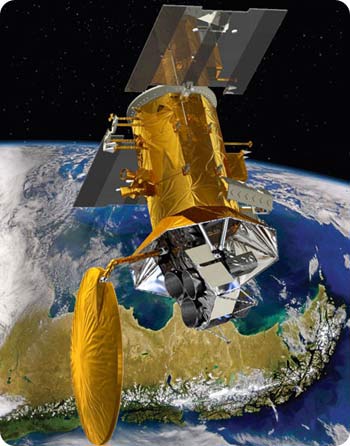The last time NASA launched a craft named Aquarius, it wound up serving as a lifeboat -- it helped the three astronauts of Apollo 13 get home safely. The next Aquarius could help life across the entire planet by providing a new look at how the oceans respond to global climate change.
 Artistís illustration of the Aquarius satellite, scheduled for launch in May 2010. Credit: NASA
Artistís illustration of the Aquarius satellite, scheduled for launch in May 2010. Credit: NASAAquarius is a joint mission between NASA and Argentina. The robotic probe could launch as early as late spring. It has several goals, but the main one is to monitor the salt in the world’s oceans.
On average, ocean water contains about three and a half percent salt. But the salinity varies from place to place, year to year, and even month to month.
A change in salinity can alter ocean currents, which carry heat from the tropics to the poles. It can also change how much water evaporates from the ocean surface, which affects rainfall on land and water. So even a small change in salinity could lead to big changes in temperatures and rainfall across the globe.
Scientists have been measuring the salinity of the oceans for a long time by taking samples from ships or placing instruments on automated buoys. But these techniques measure only individual points in the oceans, and only at specific times.
Aquarius will circle the globe from pole to pole, allowing it to measure the salinity of all the world’s oceans every seven days. Its measurements will allow scientists to track changes over the next three years or longer -- providing key information on how the oceans respond as the global climate continues to change.

